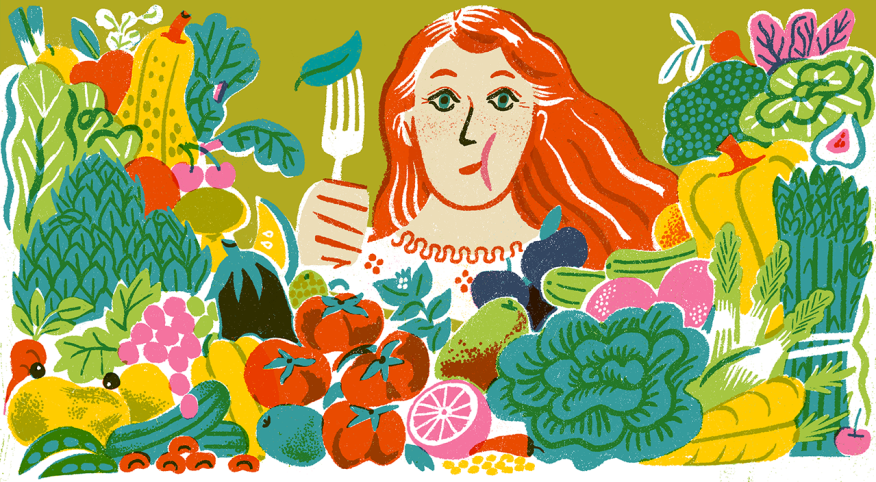Of all the numerous books and articles I’ve read about healthy eating, the philosophy that has always made the most sense to me is that of Michael Pollan, author of the book In Defense of Food. Pollan simply states, “Eat Food. Not Too Much. Mostly Plants.”
So, when a friend posted about a 21-day plant-powered jump-start program run by Plant Powered Metrowest, I was intrigued. According to the website, “Whole food, plant-based (WFPB) nutrition emphasizes nutrient-rich foods from the plant kingdom while minimizing and eliminating both processed foods and animal products.”
I had already begun cutting back on my red meat consumption for health reasons (my father had colon cancer) and had also toyed with the idea of eliminating chicken from my diet. Signing up for the program could be a good way to see if a full-on plant-based diet was right for me. And how hard could it be to commit to it for 21 days?
It turns out it was harder than I thought. Here is what I learned in the process.
· It’s more than just eating more plants
Before starting the program, I mentally prepared to eat more salads, fruits and beans while forgoing meat. But I didn’t fully take in that a plant-based program would also mean letting go of eggs and dairy products.
In retrospect, attempting to go from my current eating habits to a purely plant-based diet was too drastic and restrictive. I cheated and ate some cheese and yogurt during the first few days.
· Changing your lifestyle requires discipline and advocacy
Following plant-based eating was easy when I was mostly home and controlling my meals. But then the weekend came, and we had dinner plans with friends. Everyone wanted to order several dishes to try, including one with chicken and another with duck. I didn’t want to be a pain or declare myself a vegan and then feel like a failure the next time they saw me at a barbecue. So I went off for the night and then wished I hadn’t.
· Digestive improvements
I didn’t notice a difference in my energy level or sleep patterns, but plant-based eating did change my bathroom habits. I never thought I had any digestive issues or problems going number two, but wow! A plant-based diet (along with drinking more water) made me much more regular. I also felt less bloated and generally lighter, but not hungry.
· Welcome back, old friends
While going plant-based meant eliminating many foods from my diet, it also allowed me to add some old favorites without guilt. During all my years of yo-yo dieting, I had made pasta, bread, potatoes and rice my mortal enemies. But the jump-start program encourages you to eat whole (not white or processed) grains, so I did. For years I worried that carbs would equal automatic weight gain, but that was untrue. In fact, I lost a few pounds and didn’t feel like I was dieting at all.
· Accountability helps
It takes work to make a lifestyle change. Having paid for the program made me more determined to stick with my commitment to eating plant-based for the three weeks. The program also made me think more about what I ate and stopped me from mindlessly snacking throughout the day.
On the flip side, telling people you are attempting to make a lifestyle change can make it harder. It feels like when you don’t stick to it you are public-ally failing.
· Fruit does satisfy a sweet tooth
I love candy, chocolate and cookies. But eliminating sugary and processed foods for a few days made me crave them less. And with my primary source of sugar coming from fruits, these natural sugars somehow tasted even sweeter.
· Think ahead
Being plant-based required some planning and prep. I had to think about what I would eat and ensure I had food in the house (or the processed snacks in the pantry would tempt me). But by prepping my food in advance, I found I was more likely to choose the plant-based option since it was readily available.
Just like when I tried a dry January, attempting to eat plant-based taught me a lot about myself. It was interesting to see what foods I missed and what I could eliminate easily. I also realized how spending a few extra minutes slicing and dicing could make fruits and vegetables more appealing.
A plant-forward (rather than plant-based) diet seems better. By placing the primary focus of my meals and snacks on fruits, vegetables and whole grains, I can feel better physically and not deprived. Ultimately, I’ll add a few foods to my diet that were considered off-limits on the program.
Have any of you ever tried plant-based eating? How did it go? Let us know in the comments below.

Irene Rinaldi
Follow Article Topics: Health









